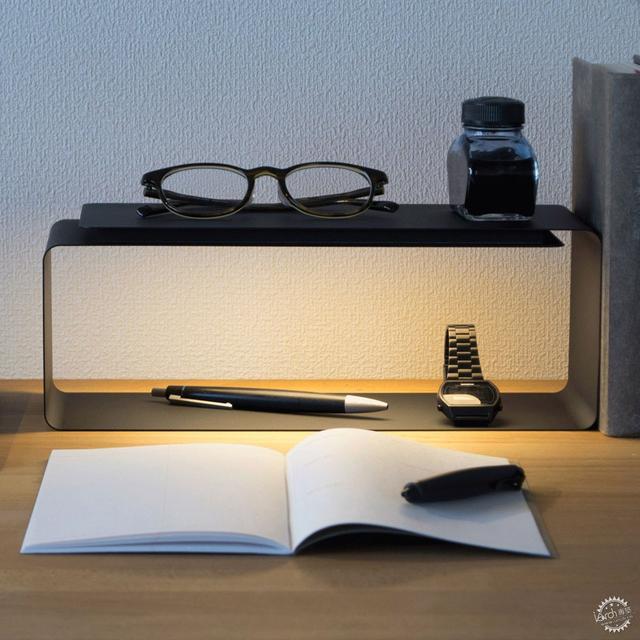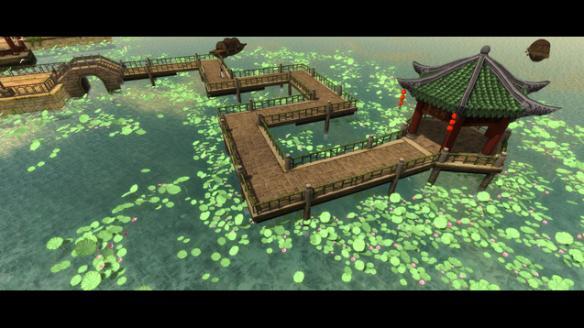
东京设计师展上的五盏灯
Five lights created by Japanese designers revealed at Designart Tokyo
日本的设计师在东京设计师周期间展示了一系列具有传统工艺的灯,这些灯的制作材料精致,它们都适用于小户型。Dezeen的设计编辑Augusta Pownall挑选出了5款最有趣的灯。
东京设计师展览在刚过去的2008年10月19日至28日举行,许多的设计工作室都展出了他们的照明作品,这些作品中很多都借鉴了日本的建筑形式,如障子(日本的传统纸格栅)和金箔金属加工工艺技术。
设计师们的灯可以随意的移动,这极大地方便了受住房空间约束的日本家庭。
我们选出的五盏最佳的灯:
Japanese designers presented lights that showcased traditional craft, were created from delicate materials, and are made for small homes, at Designart Tokyo. Dezeen's design editor Augusta Pownall picks five of the most interesting.
Many design studios showing lighting at Designart Tokyo, which took place 19 - 28 October 2018, drew on Japanese architectural forms such as shoji (translucent paper room dividers), and craft techniques such as gold foil metalworking.
Several other designers created lights that could be easily moved to cast light where needed in space-strapped Japanese homes.
Our pick of the five best lights on show are below:

AKII工作室设计的夜书和灯架
AKII工作室的主要方向是产品设计,该工作室由设计师Naoaki Iwamatsu和Takeaski Maeda创立。该工作室展示了两种采用LED灯管技术来解决具体问题的产品,一款是黑色书架上的一本特别的书,另一款是可以作为存储空间的灯。这两款都很适合日本家庭使用。
灯架宽30厘米,相当于A5书的宽度,由毫米厚的钢板制成,通过手工弯成长方形,其内部中空的小空间可以用来储存一些小物品。夜书是一本具有书脊的书的形状,当你站在书架上时,它看起来就像一本书。当你把它从外壳中拉出来时,柔和的光芒顺势就点亮了周围的空间。
Night book and light shelf, by Akii Design Lab
Akii is a product design studio consisting of designers Naoaki Iwamatsu and Takeaski Maeda. The duo showcased two products that use LED lights to solve specific problems, finding a particular book on a dark bookshelf and a light that can double up as a storage unit where space is a premium, as it is in Japanese homes.
Light shelf is 30 centimetres wide, the width of an A5 book, and made from millimetre thick steel plate, hand-bent to form a square. Small items can be stored in the hollow space. Night book is the size of a regular volume with a spine that looks like that of a book when standing on a shelf. When pulled out of its casing, it lights up the surrounding space with a soft glow.

Hiroto Yoshizoe设计的“像素”灯
去年,Hiroto Yoshizoe凭借“建材像素”赢得了雷克萨斯全球设计大奖,今年的“像素”灯则以一种新的方式出现,Yoshizoe说:“像素灯是一种V字形的结构,看上去像障子(日本房屋用的纸糊木框)和砖块之间的混合体。当光穿过纸张时,它可以创造出一种多层的光。”
Yoshizoe使用他所能找到的最白的纸来制造这款灯。作为一款具有装饰性能的项目,这件作品作为一个小单位的建筑材料,可以组装成天花板或墙壁。
它的工作原理为一种内在的机制,光波经过四次反射后混合成一种颜色,然后出现在表面上。Yoshizoe说:“它看起来就像数码投影,但事实上这盏灯只是一种模拟机制,从它的背面进行投射反射。”
Pixel, by Hiroto Yoshizoe
Hiroto Yoshizoe won the Lexus Design Award last year for his "construction material" Pixel, which he showed in a new configuration. "Pixel is a V-shaped structure that looks like a hybrid between a shoji and a brick," said Yoshizoe. "As light passes through paper, it can create a type of light that has even more layers."
Yoshizoe uses the whitest paper he can find, to best reflect light. As well as being a decorative item, the piece was developed as a small unit of building material that can be assembled into a ceiling or wall.
It works using an internal mechanism, which reflects the light waves four times, and mixes them into one colour that then appears on the surface. "It looks like it’s a digital projection, but in fact its an analogue mechanism that simply projects the reflections from the back," said Yoshizoe.

Baku工作室设计的Suki灯
Baku Sakashita创立的设计工作室与Isamu Noguchi的Akari light Sculptures和伦敦灯光设计师Michael Anastassiades的风格相似,对于Suki系列灯来说,Suki在日语中代表着透明,手工制作的纸,空白的空间,或精致的味道。
这款灯由半透明的藤条纸和铁丝制成,纸层之间是若隐若现的光源,“给一些空间”。光线在地板和墙壁上形成几何阴影图案。
Sakashita告诉Dezeen的记者:“从技术上讲,这款灯的每一个部分都是由手工制作而成的,我试图引入传统的手工技巧,使用湿过的纸在火焰上延伸,以此来升华障子。
Suki, by Studio Baku
The design studio founded by Baku Sakashita looked to both Isamu Noguchi's Akari light sculptures and London-based lighting designer Michael Anastassiades, for the Suki collection – Suki in Japanese can mean transparency, making paper by hand, empty space, or refined taste.
The lights are made from semi-translucent tengujo paper and wire, with the light source visible amongst the layers of paper, "to give some space". The light creates geometric shadow patterns on the floor and walls.
"Technically, each part is made by hand, and I attempted to bring traditional skills including the application of the skill of using water when stretching paper over a flame to make Japanese shoji to sublimation," Sakashita told Dezeen.

RKDS的Oculus灯
Oculus灯是一套四盏白色的独立灯,它出自Ryuichi Kozeki领导的RKDS设计工作室,这盏灯移动方便,可以应用在家里的任何地方。
对于每一盏灯,Kozeki使用计算机辅助设计(CAD)来建模,随后使用3D打印技术制作出了塑料的模型。最后在塑料模型上切割出一条起伏的线,让每盏灯在地面上投射出圆形的光圈,就像一个大而圆的太阳。
Kozeki将他的设计比作一件建筑,其形式简单——由直线和曲线构成,他渴望“探索照明和一些更基本的东西之间的关系。”
Oculus, by RKDS
Oculus is a set of four white freestanding lights, by RKDS – a design studio led by Ryuichi Kozeki, which can be easily moved around the home to light different areas.
For each piece, Kozeki 3D-printed a plastic form modelled using computer-aided design (CAD), cutting an undulating line through the shape so that each casts a round circle of light on the ground, resembling a big, round sun.
Kozeki likens his designs to a piece of architecture. With the simple forms constructed from straight and curved lines, he wanted to "explore the relationship between lighting and something more fundamental".

Hitoshi Makino设计的Wa灯
Makino将挤压型的铝圈内镶上意大利生产的LED灯,在加上金属制品大师在京都制成的金箔盘。
这款灯融合了他生活在两种文化中的体验感,将“透过托斯卡纳森林的树叶的阳光之美与日本式晨光的清爽感”结合在一起。
Makino之前在意大利师从Piero Lissoni,Piero Lissoni非常尊重日本的文化,Makino在学成后回到日本,建立自己的设计工作室。他告诉Dezeen的记者:“当我住在日本时,没有人向我讲述日本的传统文化。我需要自己弄清楚。”
'wa'一词在日语中包含很多内容,例如圆圈、和谐、联系和情感联系或纽带,这正是Makino想在设计中体现出的东西。
Wa, by Hitoshi Makino
Makino has combined an extrusion-moulded aluminium ring inset containing LED lights made in Italy, with gold foil discs produced in Kyoto by master metalworkers.
The light draws on his experience of living in both cultures, combining "the beauty of sunlight that comes through the leaves in Tuscan forests and the refreshing feeling of the morning glow in Japanese nature."
The designer spent time in Italy working for Piero Lissoni, who he says has a great respect for Japanese culture, before moving back to Japan to set up his own design studio. "When I lived in Japan, no-one told me about Japanese culture. I had to find out for myself," he told Dezeen.
The word 'wa' has various connotations in Japanese, including circle, harmony, connection, and emotional ties or bond, which Makino hopes are reflected in the design.



由专筑网王帅,蒋晖编译
【专筑网版权与免责声明】:本网站注明“来源:专筑网”的所有内容版权属专筑网所有,如需转载,请注明出处
,




